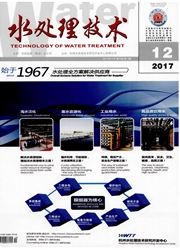

 中文摘要:
中文摘要:
从白腐真菌自身的生物特性和其降解染料废水的特点出发,主要综述了白腐真菌通过过氧化物酶系和漆酶降解染料废水的机理,分析了白腐真菌对偶氮类、肽菁类和蒽醌类等染料废水降解的代谢过程,并考察了影响白腐真菌降解染料废水的主要因素。认为该领域未来研究目标应集中在不同性质污水处理的微生物菌群、含量及适应性,微生物法复合处理污水的工艺、技术、方法和机理及其中试放大和生产应用;且如何避免反应体系染菌已成为目前亟待解决的问题。
 英文摘要:
英文摘要:
The mechanisms for the degradation of dye wastewater by white rot fungi through peroxidases and laccases were reviewed from the biological characteristics of white rot fungi and the characteristics of degradation, Metabolic processes of the degradation of dye wastewater containing azo peptide cyanine and anthraquinone by white rot fungi were analyzedand main factors influencing the degradation were concluded. It was prospected that the coming research in this area, the microbial flora, the content and suitability in different types ofwastewater should be focused on the processes, technologies, methods and mechanisms and pilot scale of complex microbial method for sewage treatment and their manufacturing applications. Approach to avoid reaction system staining bacteria is the most serious problem at the current stage.
 同期刊论文项目
同期刊论文项目
 同项目期刊论文
同项目期刊论文
 期刊信息
期刊信息
